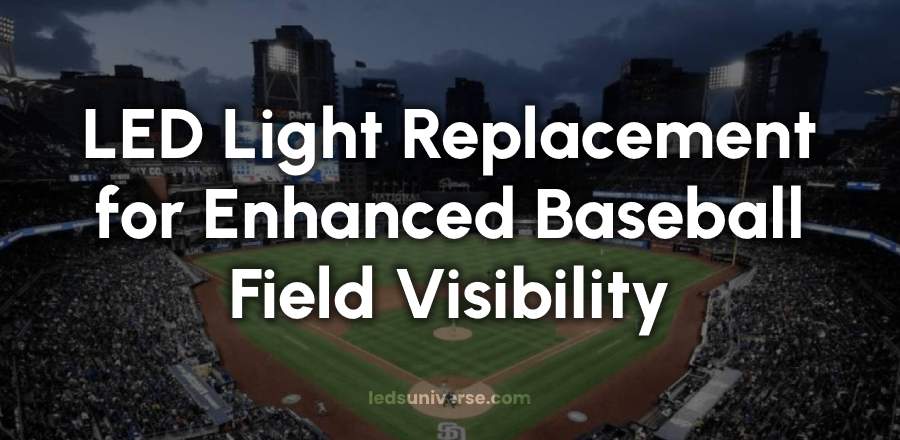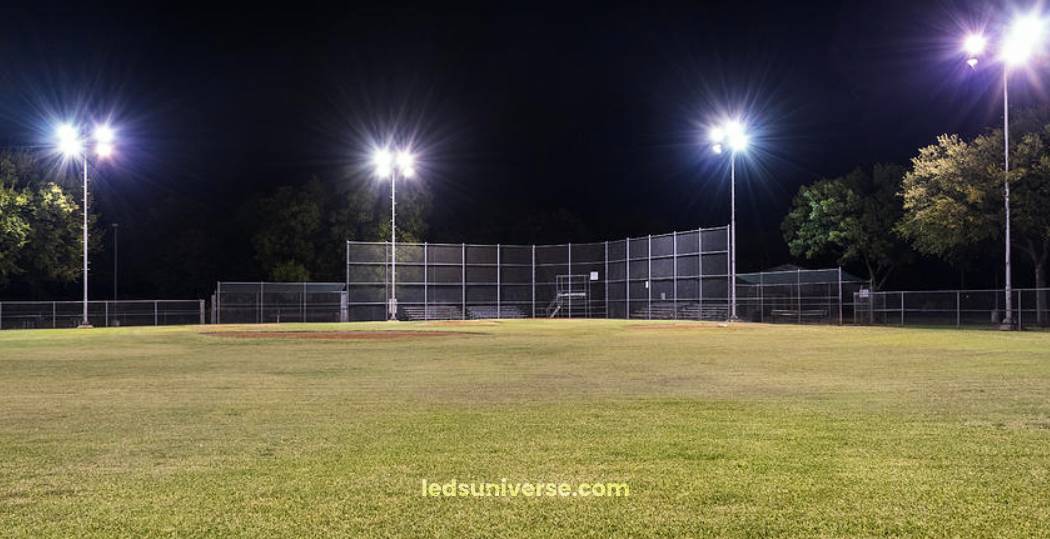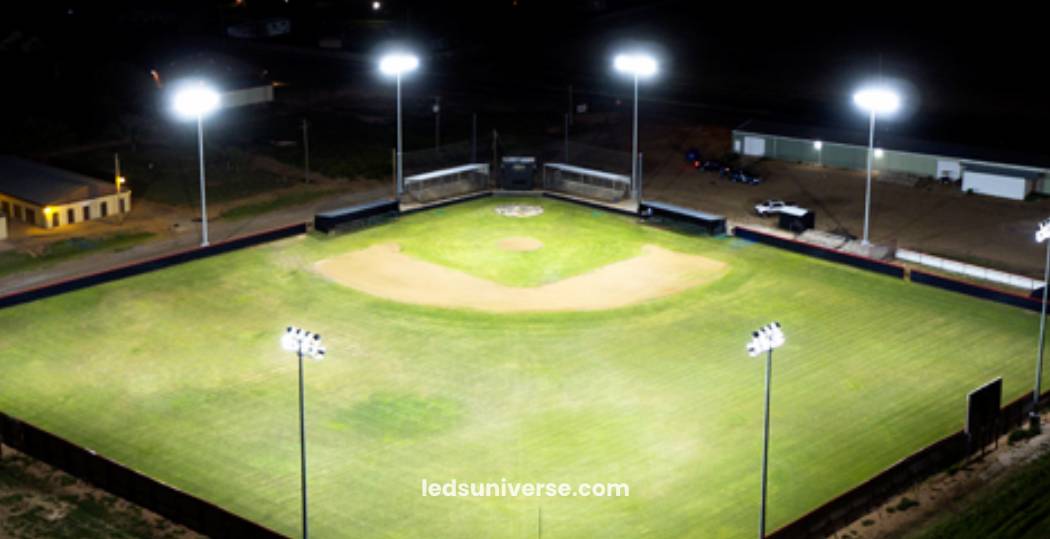
In the world of baseball, the thrill of the game extends beyond the diamond and into the shadows of dusk. As evening games bring a different energy to the field, proper lighting becomes indispensable for players, coaches, and fans alike. The right lighting not only enhances visibility but also transforms the overall experience, ensuring safety and performance are prioritized under the bright lights.
The design and implementation of effective lighting systems necessitate a comprehensive understanding of a variety of standards and best practices that are specifically tailored to meet the unique needs of baseball fields. Each field presents its own set of challenges and requirements, which can vary based on factors such as the level of play, the field’s layout, and the specific activities being conducted. This involves not only determining the appropriate brightness but also achieving uniformity across the entire playing surface to minimize shadows that could affect gameplay.
Reach out for free lighting consultation
Table of Contents
ToggleThe standards governing baseball field lighting are derived from various organizations, such as the American National Standards Institute (ANSI) and the Illuminating Engineering Society (IES). These standards provide guidelines on the required illumination levels for different types of baseball fields, ensuring that players can perform at their best while also providing spectators with a comfortable viewing experience.

Illumination levels are typically expressed in foot-candles, a measure of light intensity. For professional baseball fields, the average illumination level should be at least 100 foot-candles, with some areas, such as the pitcher’s mound and home plate, requiring even higher levels to account for the precision needed in gameplay. Amateur and high school fields generally have lower illumination requirements, usually ranging from 50 to 70 foot-candles, depending on the level of play and the specific requirements set by local sports associations.
Lighting should be distributed evenly across the field to minimize shadows and glare, which can hinder players’ performance and affect spectators’ experiences. The ratio of maximum to minimum illumination should ideally not exceed 3:1, meaning that the brightest area on the field should not be more than three times as bright as the dimmest area. Achieving this uniformity requires careful planning of fixture placement and spacing.
In addition to illumination levels and uniformity, the color temperature of the lights also plays a role in the visual comfort of players and fans. A color temperature of 4000K to 5000K is generally recommended for baseball fields, as it provides a natural daylight-like quality that enhances visibility without causing excessive glare. The specific layout of a baseball field influences lighting design. Different positions, such as the outfield, infield, and dugouts, may require tailored lighting solutions to ensure optimal visibility throughout the game. The arrangement of fixtures should also consider potential obstructions, such as stadium structures or trees, which can cast shadows and interfere with the lighting effectiveness.
Safety is a paramount consideration in the design and installation of baseball field lighting systems. Compliance with national and local safety regulations is crucial for ensuring the well-being of all individuals present at the field, including players, coaches, and spectators. Organizations such as the National Fire Protection Association (NFPA) provide guidelines that address various safety aspects, including electrical standards and emergency lighting requirements.
Electrical installations for lighting systems must adhere to the National Electrical Code (NEC), which outlines safety practices for wiring and electrical components. Proper grounding, circuit protection, and wiring methods are critical to preventing electrical hazards. Regular inspections and maintenance of the lighting system can help identify potential issues before they become problematic.
The placement of lighting fixtures should also take into account safety for both players and spectators. High-intensity lights can create glare, which may impair visibility on the field and in the stands. To mitigate this, fixtures should be angled correctly to minimize direct light exposure to players’ eyes. Using fixtures with a shielded design can also help control glare and improve overall visibility.
Adequate emergency lighting must be installed to provide sufficient illumination for evacuation routes and critical areas, allowing everyone present at the facility to exit safely. Regular testing and maintenance of these systems are necessary to ensure they function correctly when needed.
In addition to electrical safety, the physical structure of the lighting system should be designed to withstand environmental factors, such as wind and weather. Lighting poles must be robust and properly anchored to prevent tipping or falling, which could pose serious risks to players and spectators. Compliance with local building codes, which may dictate specifications for pole height, material, and foundation requirements, is essential in ensuring structural integrity.
Proper training for staff regarding the safe operation and maintenance of the lighting system is also an integral component of safety and compliance. Regular training sessions can help staff identify potential hazards, understand emergency procedures, and carry out maintenance tasks effectively.
As technology continues to evolve, innovations in lighting design are transforming baseball fields, enhancing performance, safety, and energy efficiency.
One of the most notable advancements in baseball field lighting has been the widespread adoption of LED technology. LED lights offer numerous advantages over traditional lighting solutions, including lower energy consumption, longer lifespans, and reduced maintenance costs. By using LEDs, facilities can achieve significant energy savings while improving illumination quality.
Incorporating smart lighting controls has also become a trend in modern baseball field lighting. These systems allow for dynamic adjustments based on factors such as time of day, weather conditions, and specific event requirements. Smart lighting solutions can optimize energy use and ensure the right level of illumination for each game or practice session, enhancing overall efficiency.
Research has shown that proper lighting can positively impact player performance and safety. Adequate lighting reduces the risk of injury by improving visibility on the field, allowing players to track the ball more effectively and respond quickly to game situations. The psychological aspect of lighting should not be overlooked; well-lit fields create a more enjoyable atmosphere for players and spectators, contributing to a positive sporting experience.

Examining successful implementations of baseball field lighting provides valuable insights into best practices and innovative solutions. Several notable case studies highlight how various facilities have addressed lighting challenges and enhanced the overall experience for players and fans.
One prominent example is the renovation of a major league stadium that upgraded its lighting system to LED technology. The new system improved energy efficiency significantly, reducing electricity consumption by up to 50%. This transition also enhanced visibility on the field, allowing for clearer viewing of the ball and improved player performance. Additionally, the stadium incorporated smart lighting controls, which allowed for adaptive lighting adjustments based on the time of day and specific game conditions. This level of control ensured optimal illumination while minimizing energy use during non-game hours.
Another case study involves a high school baseball field that faced challenges related to inadequate lighting. The school district recognized the need for improvement to enhance player safety and the spectator experience. After consulting with lighting design experts, the district installed new poles and LED fixtures that provided uniform illumination across the field. The upgrade not only met local lighting standards but also created a more inviting atmosphere for evening games. The positive feedback from players, coaches, and families reinforced the value of investing in a quality lighting system.
In a community recreational field, the lighting upgrade was part of a broader initiative to promote evening play and increase community engagement. The installation of energy-efficient fixtures allowed for longer playtime without incurring high operational costs. The local government collaborated with community members to fund the project, emphasizing the importance of accessible sports facilities for residents. By enhancing the lighting, the field became a hub for youth leagues and adult recreational teams, fostering a sense of community and encouraging healthy activity.
A university sports complex also provides a compelling example of how improved lighting can enhance the overall experience. The institution recognized that its aging lighting system was not only inefficient but also inadequate for the growing number of events hosted at the facility. A comprehensive redesign was implemented, featuring LED lights and a robust control system that allowed for various lighting configurations depending on the event type. This transformation led to increased utilization of the field, drawing larger crowds for games and creating a more vibrant campus life.
These case studies illustrate how thoughtful planning and modern technology can transform baseball fields, creating better environments for play and fostering community engagement. Each example demonstrates the positive impact of investing in effective lighting solutions that align with established standards and prioritize safety.
Investments in baseball field lighting yield numerous benefits, from improved player performance to enhanced spectator enjoyment. However, financial considerations are crucial when planning lighting upgrades or installations. Understanding the costs associated with different lighting technologies and the potential return on investment can help organizations make informed decisions.
The initial investment for installing a new lighting system can vary significantly based on the technology chosen, the size of the field, and the complexity of the installation. While traditional lighting systems may have lower upfront costs, they often incur higher energy and maintenance expenses over time. In contrast, LED lighting systems may require a more substantial initial investment, but their energy efficiency and longevity result in significant long-term savings.
Many organizations, especially at the community level, may qualify for grants or incentives aimed at promoting energy efficiency and sustainability. Exploring available funding options can alleviate some of the financial burden associated with lighting upgrades. Additionally, local governments may offer programs to assist with the costs of retrofitting or installing new lighting systems, making it more feasible for schools and recreational facilities to enhance their fields.
Hosting events or partnering with local businesses can generate the necessary funds to support the initiative. By involving the community in the process, facilities can foster a sense of ownership and pride, encouraging ongoing support for maintenance and future improvements.
This analysis should take into account not only the financial aspects but also the intangible benefits, such as improved safety, enhanced player experiences, and increased community engagement. By understanding the full scope of the impact that upgraded lighting can have, organizations can make more informed decisions that align with their goals and values.
The role of effective lighting in baseball extends far beyond mere visibility; it shapes the overall experience for players, coaches, and fans alike. By adhering to established standards and embracing innovative technologies, baseball fields can create environments that enhance performance and promote safety. The transition to energy-efficient solutions, such as LED lighting, not only reduces operational costs but also aligns with broader sustainability goals, making facilities more environmentally friendly.